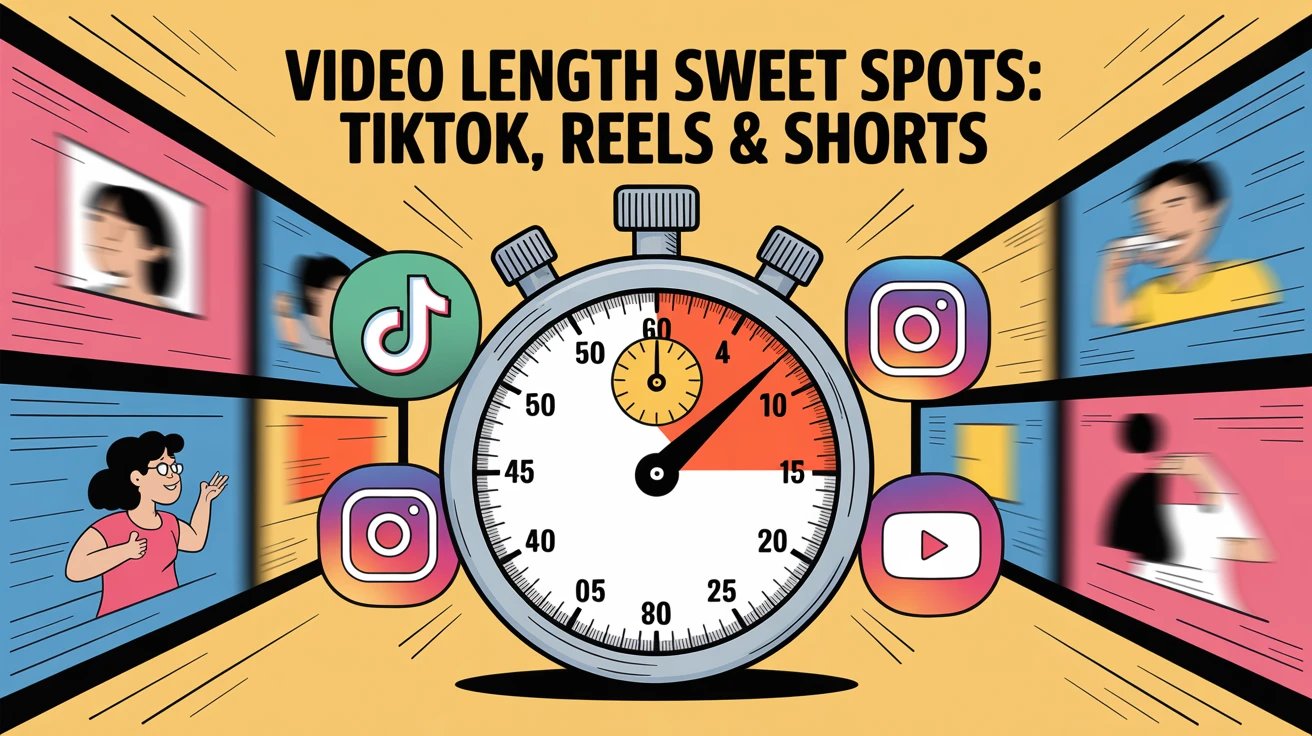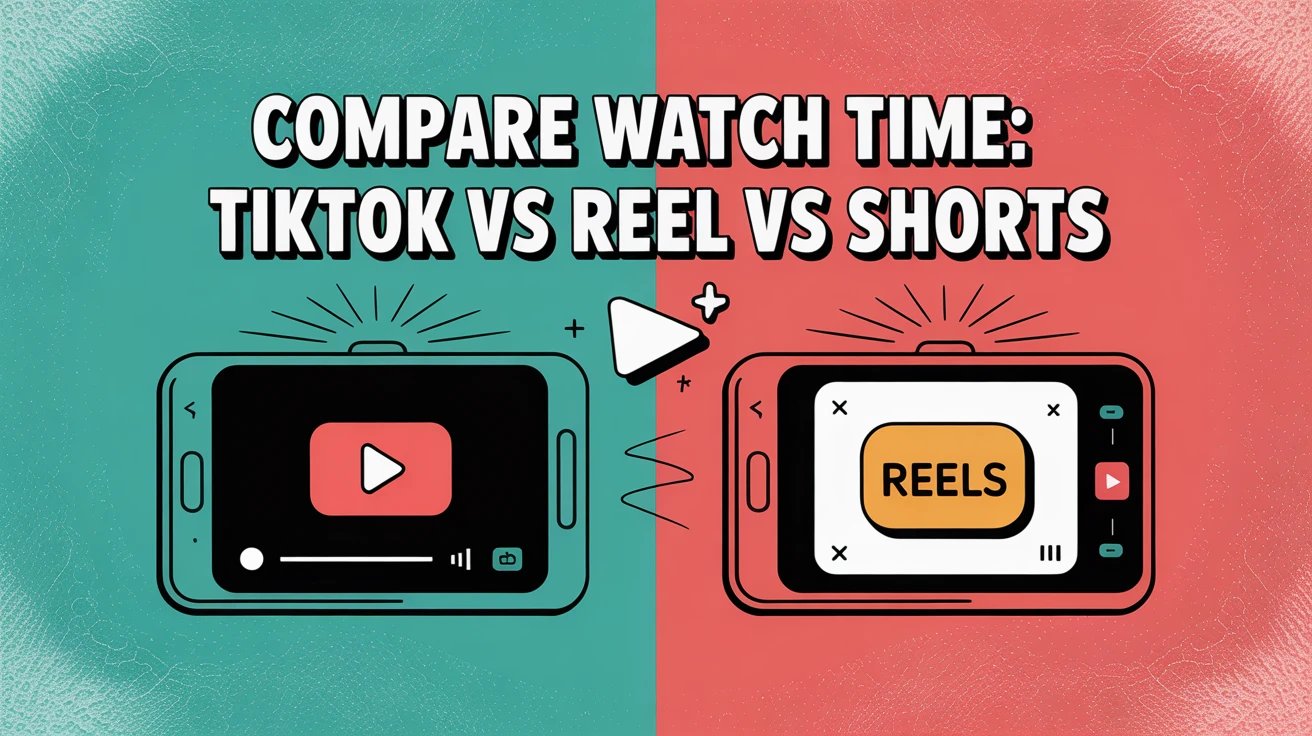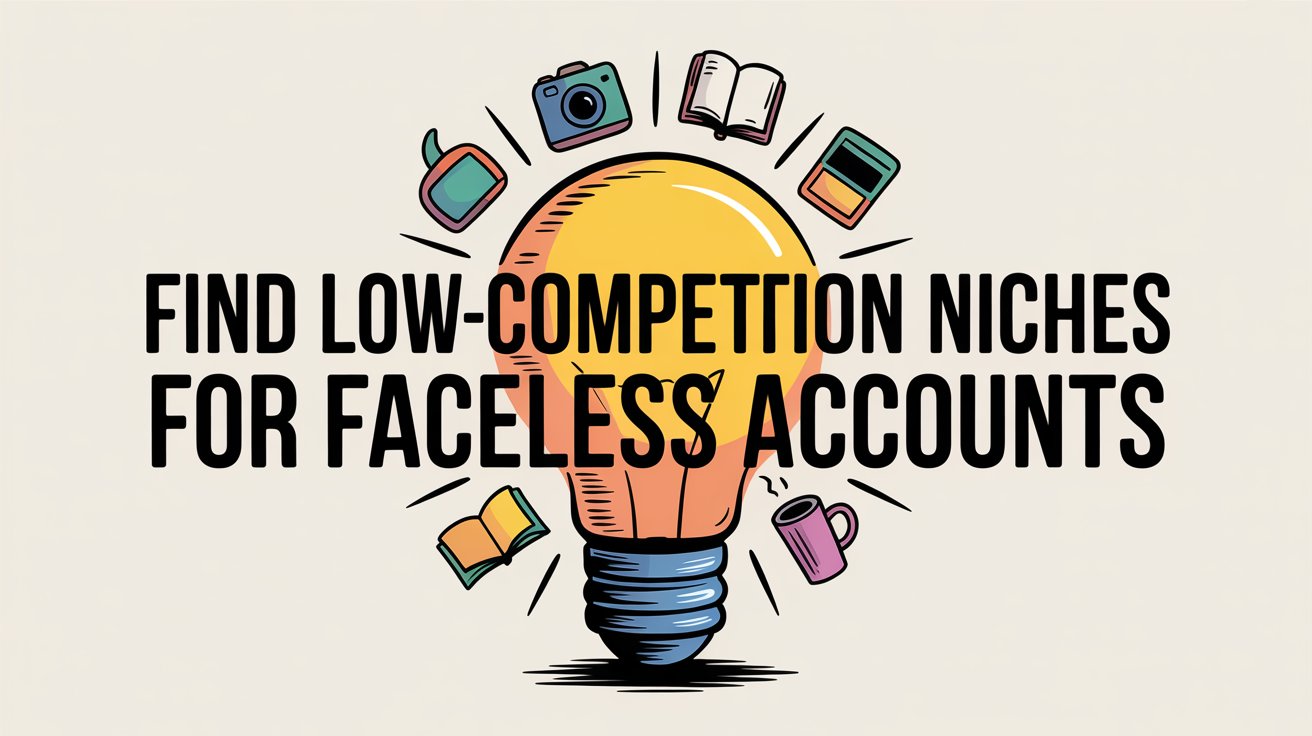Marketers are spending more than ever on influencer campaigns, but not on influencer tracking. What do they really get in return?
In far too many cases, the answer is vague, likes, follower counts, and engagement rates. Nice to look at, but do they actually translate to anything real on sales?
That’s the million-dollar question most can’t answer.
The problem isn’t the influencers. It’s how we track their impact. Most influencer tracking tools are built to measure noise, not revenue.
And in 2025, with Instagram’s influencer economy projected to surpass $22 billion, guessing wrong on creator partnerships doesn’t just cost time, it burns through your budget.
What marketers need now isn’t another bloated dashboard. It’s clarity. A way to connect every campaign, post, and partnership to what actually matters: conversions, customers, and ROI.
Let’s talk about how to change that.

What Makes an Influencer Tracking Platform Worth Your Investment?
Influencer marketing has grown into a multi-billion-dollar industry, but proving its impact is still a major pain point. According to The State of Influencer Marketing report, 60% of enterprise marketers cite ROI measurement as their top challenge.
Despite all the likes, shares, and story views, most teams struggle to connect influencer activity to actual business results.
This is why a worthwhile influencer tracking platform should do more than track vanity metrics. It should:
- Quantify ROI in real terms, not just engagement but revenue and customer value
- Cut through the noise of inflated follower counts and fake engagement
- Align with your sales and marketing funnel, showing how influencers impact conversions at every stage
- Save time with automation and integrations, so teams aren’t stuck pulling spreadsheets and chasing vague metrics
In short, the platform should help you stop guessing and start making data-driven influencer marketing decisions that scale.
Below, let us have a closer look at key features that separate marketing fluff from real ROI.
6 Must-Have Features in ROI-Focused Influencer Tracking Software
You need more than surface-level insights to get an actual return on your influencer marketing spend.
The best influencer tracking platforms are built for performance marketers who care about real impact, not just likes and comments. Here’s what to look for if you’re serious about driving measurable growth.
ROI Measurement
Most influencer platforms track engagement metrics like impressions, likes, and shares, but that’s only part of the story. If you can’t tie influencer efforts to profit, you’re flying blind.
Here’s what real ROI tracking should include
- Profit vs. Cost Analysis: Go beyond engagement to measure net return on every influencer campaign. Know how much revenue was generated against what you spent.
- Multi-Touch Attribution: Influencers don’t always drive immediate conversions. Attribution modeling helps you understand how they support other touchpoints in the customer journey.
- Lifetime Value (LTV) Tracking: It’s not just about the first sale. Are influence-acquired customers more loyal, higher-spending, or more likely to convert again? LTV shows a long-term impact.
Real-Time Performance Dashboards
Most platforms offer post-campaign reports, but your budget is spent by then. You need live, real-time influencer dashboards that allow you to make in-flight optimizations. Why this matters:
- See which influencers are currently generating clicks, conversions, or revenue.
- Identify under performers before the campaign ends.
- Pivot strategy instantly rather than retroactively.
Example: You have a micro-influencer outperforming a macro influencer in the mid-campaign. Real-time insights let you double down instantly.
Fraud and Influencer Vetting
Fake influencers are a real and expensive problem. According to studies, 1 in 4 influencers has bought a fake audience.
You risk throwing the budget at bot farms and engagement pods without fraud detection. Look for:
- It Helps Identify Fake Followers: Some influencers have a significant following. However, they show extremely low engagement rates. This is primarily due to buying followers and bot engagement.
- Engagement Authenticity Checks: Are the comments and interactions from real users or fake accounts and bots?
- Historical Performance Validation: Review past campaigns and spot red flags, such as sudden follower spikes or repetitive, low-effort content.
Helps in Competitor Benchmarking
Most influencer marketing tools show how your campaign performs in isolation. But to make strategic decisions, you need context. Competitor benchmarking helps you evaluate your performance against others in your industry.
Essential benchmarking features:
- Share of Voice (SOV): See how often influencers mention your brand compared to competitors.
- Industry ROI Benchmarks: Gauge whether your returns are on par, below average, or ahead of the curve.
- Influencer Overlap Reports: Discover if competitors are working with the same creators, and how they’re performing.
Automated Reporting and Custom KPIs
Manually pulling influencer campaign results into a spreadsheet for your CMO is not only old-fashioned, it’s inefficient. The right platform offers automated, customizable reporting so stakeholders get what they need when needed.
Must-haves:
- Custom KPIs: Define metrics that matter to your brand, like “ROI per product line” or “Revenue per creator.”
- Auto-Scheduled Reports: Deliver weekly, monthly, or real-time campaign insights. Requiring minimum to no manual effort required.
- White-Labeled Dashboards: Share reports with clients or execs in a branded, polished format.
Integration with Your Existing Stack
Even the best influencer tracking tools are useless in a silo. You need a system that integrates seamlessly with the tools you already use, so your data connects across teams and platforms.
Essential integrations:
- CRM Tools: Sync with HubSpot, Salesforce, or Zoho to track influencer-driven leads and customer profiles.
- E-commerce Platforms: Track sales from influencer campaigns via Shopify, WooCommerce, or BigCommerce.
- Analytics Tools: Integrate with Google Analytics 4, Looker Studio, or Mixpanel for end-to-end attribution modeling.
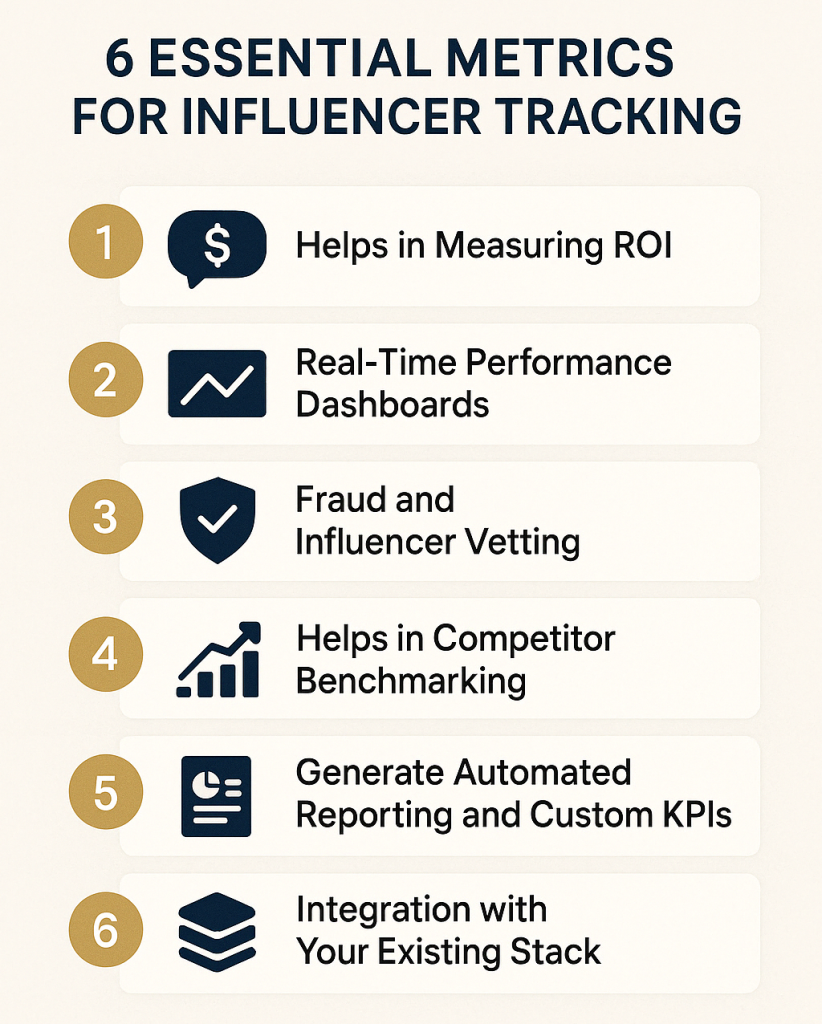
What Red Flags to Avoid
Knowing what to look for is only half the story. Even the most popular influencer dashboards can fall short. Watch out for these deal breakers:
No Revenue Attribution
If the software only reports engagement metrics like likes or comments, it won’t help you prove campaign ROI.
Influencer management tools must connect content or help you measure actual conversions and revenue; anything less is guesswork.
Delayed Data
Outdated data means missed chances. Influencer dashboards should be updated in real time, not after the campaign ends. When you’re scaling influencer campaigns, live insights are essential.
Lack of Fraud Detection
Without built-in fraud checks, you risk working with fake influencers. A tracker for influencer marketing should spot suspicious activity, like bot followers or inflated UGC performance, before you commit to spending.
No Custom KPIs
Generic reporting poses a significant limitation. Track ROI for each product, channel, or region. Not merely overall performance. The appropriate influencer tracking tools enable complete customization.
Poor Support
Fast support matters. If your team is mid-campaign and can’t get help, it can cost you more than time and impact your ROI. Look for platforms with responsive support and proactive service.
Next Steps: How to Test Before You Commit
Choosing the right influencer tracking software isn’t about picking the most popular tool. It’s about finding one that fits your workflow and actually helps you make smarter decisions.
Start by exploring platforms that offer real-time insights, multi-channel tracking, and customizable KPIs. Ask vendors how their tool handles fraud detection, offline sales tracking, and attribution modeling.
If you’re looking for a platform that combines AI-powered analytics, flexible reporting, and seamless integration with your existing stack, Shortimize is worth a closer look.
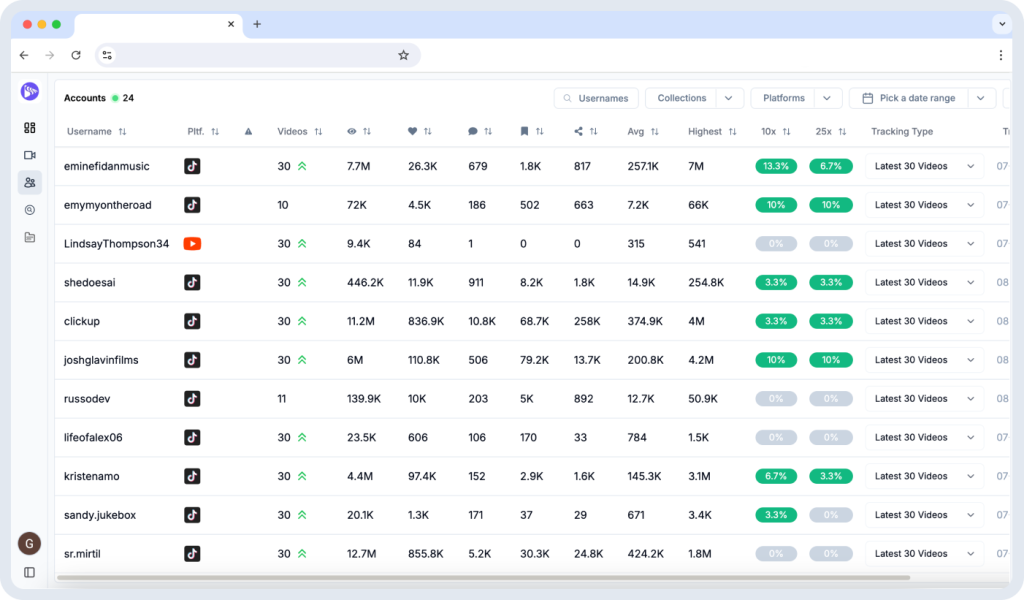
In Conclusion: Choosing the Right Influencer Tracking Tools
Today, influencer marketing has matured into a strategic growth lever. But without ROI tracking, you’re just hoping your creators perform. And hope is not a strategy.
Selecting the ideal influencer tracking involves more than just dashboards and data; it focuses on matching marketing expenditures with tangible, measurable results. Along with helping maintain the band’s reputation.
Furthermore, with the appropriate tools and expert assistance, companies can gain insights that enable them to strategize effectively, enhance their efforts, and achieve the maximum return on investment they deserve for their hard work.
People Also Ask
What are the three pillars of influencer marketing?
Working with influencers can significantly benefit brands. To maximize your outcomes, focus on the 3 R’s: Reach, Relevance, and Resonance.
How do you track influencer marketing?
To track influencer marketing effectively, use a tool that monitors engagement, traffic, conversions, and audience quality across platforms.
How do we track influencer ROI?
Measure metrics like conversions, revenue generated, customer acquisition cost, and lifetime value beyond likes or impressions. Attribution modeling and UTM tracking connect influencer activity to concrete business outcomes.
